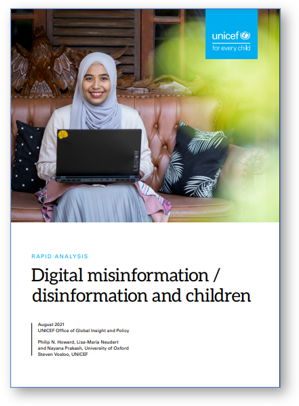 Yesterday a new UNICEF report Children, ICT and Development: Capturing the potential, meeting the challenges was officially launched. Dorothea Kleine, one of the authors, presented the key findings at Harvard’s Digitally Connected Symposium. I was one of the interviewees for the report.
Yesterday a new UNICEF report Children, ICT and Development: Capturing the potential, meeting the challenges was officially launched. Dorothea Kleine, one of the authors, presented the key findings at Harvard’s Digitally Connected Symposium. I was one of the interviewees for the report.
The short description of the report is as follows:
ICTs are not a technical sphere detached from the complex realities of children’s lives. They are increasingly woven into the very fabric of life, in income-rich and increasingly in income-poor countries. It is clear that if there is no targeted engagement with these socio-technical innovations, they are likely to reinforce existing inequalities. It follows that a focus on children and on greater equity leads to an active and reflective engagement with the potential and challenges of ICT for development, targeting in particular marginalized children. This report serves as a key contribution on which to build informed dialogue and decision making, developed jointly between research, policy and practice.
The launch included a panel with Chris Fabian, UNICEF; Gurumurthy Kasinathan, IT for Change; Chisenga Muyoya, Asikana Network; Gerrit Beger, UNICEF – with all the tweet responses recorded. From the handy list of the report’s key messages, a few stand out for me:
ICTs and development
- ICTs on their own cannot offer quick wins for child-focused development objectives. Technological innovation, however, can be crucial for strengthening social networks, disseminating information and linking disadvantaged communities with vital knowledge.
- Change at the systemic level in many cases requires a combination of technological as well as societal change. Achieving this synergy requires buy-in, and ideally participation in design, from intended users. Understanding the social context and rooting ICT for development efforts in existing incentive systems is vital if systemic changes are to be supported.
Equity
- Many projects are either equity-blind or end up working with relatively more privileged children in order to reduce the risk of project failure. In order to change this, funders have a role to play: they must demand equity-sensitive approaches and also recognise/reward risk-taking with harder-to-reach children.
Gender issues
Pilots
- To increase the chances of project success, key steps include assessing what other development initiatives are ongoing, what the existing usage patterns of ICTs are and indeed what the landscape of stakeholders looks like. [This is so obvious, and yet so often overlooked]
- Implementing pilot projects in child-focused ICT for development, while paying insufficient attention to social and cultural context and not involving people actually located within the anticipated beneficiary community are leading reasons to the failure of a project.
Failure
- The study highlights the importance of making sure failure is a recognised part of innovation within ICT for development – and not only recognised but also proactively discussed.
- If project success is understood to often include elements of failure, then development planning can move away from binaries of successful or unsuccessful projects and instead move to an approach which is open to ongoing learning.
It is obvious that a user-centred design approach that is contextually aware, equity and gender sensitive, not too influenced by commercial interests, and open to sharing (failures and successes) are key elements for successfully leveraging ICT for child-focused development. Given that this is so hard to achieve (based on the overall ICT4D track record), the last point above is particularly important. ICT4D is a living, breathing field, characterised by its many failures, genuine successes, and results in between (what Dorothea calls a “graveyard of successful pilot projects“). The only way the field will grow is if it is open to ongoing learning.
The points about funding being limited in time and scope from governments/foundations, or being driven — and dictated — by the private sector, are not at all new to ICT4D. I wonder, though, for how long we will still bemoan them. If governments/foundations have not changed their funding habits by now, and private companies continue to ultimately be driven by profit, then the change may never happen. We need to have a more open and honest debate about how to incentives these stakeholders to change, or, acknowledge that they will never change and explore how to source funds outside of these structures.
The best panelist quote of the day was by Chris Fabian: “We need to get away from the idea of projects and ‘projects for people.’ It’s not about some people doing a project for others.”
The report was written for UNICEF by the ICT4D Centre at Royal Holloway, University of London and Jigsaw Consult.


